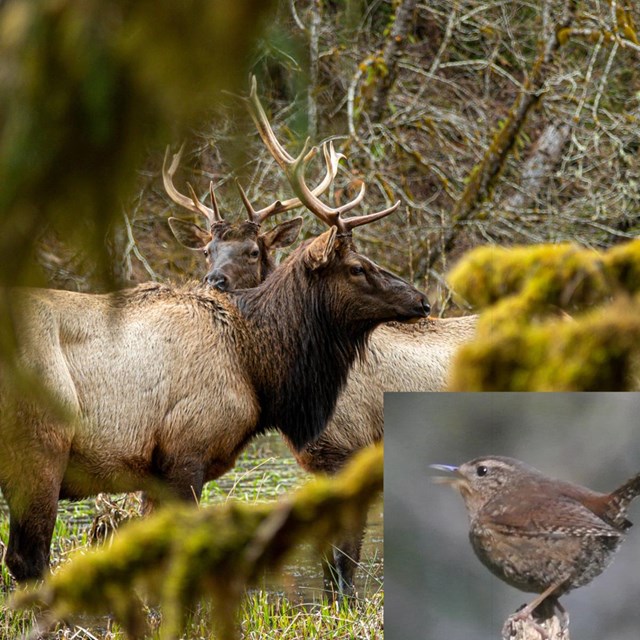Olympic's Essential HabitatOlympic is one of the most diverse wilderness areas in the United States. Its wide variety of ecosystems provide habitat critical to the survival of sensitive species, such as wild salmon, northern spotted owls and marbled murrelets. Olympic is truly a refuge for life at risk, it protects one of the largest remaining parcels of pristine habitat for some threatened or endangered species. Rest TimeWhat if every day was a Monday? Would we ever get rest? Our natural community needs quiet time, too. Biologists determine when threatened species are most vulnerable to impacts such as helicopter noise and siltation in rivers. Birds are most at risk during their spring and summer nesting seasons, while salmon most need protection during their upstream spawning runs. Park staff plan projects around these times, to minimize impacts to threatened species and their critical habitats. We strive to work around, not through, natural lifecycles. TeamworkAs stewards of Olympic National Park, visitors, maintenance workers, researchers, educators and rangers all protect species at risk. The park may need to close a trail or postpone road or bridge repairs to increase survival chances for threatened and endangered species. If park facilities are temporarily closed, please have patience and consider visiting another one of Olympic's many wonders. Join us as stewards of your national parks, where care of natural communities is our top priority.
Endangered Species Act, 1973 |
Last updated: March 11, 2025


